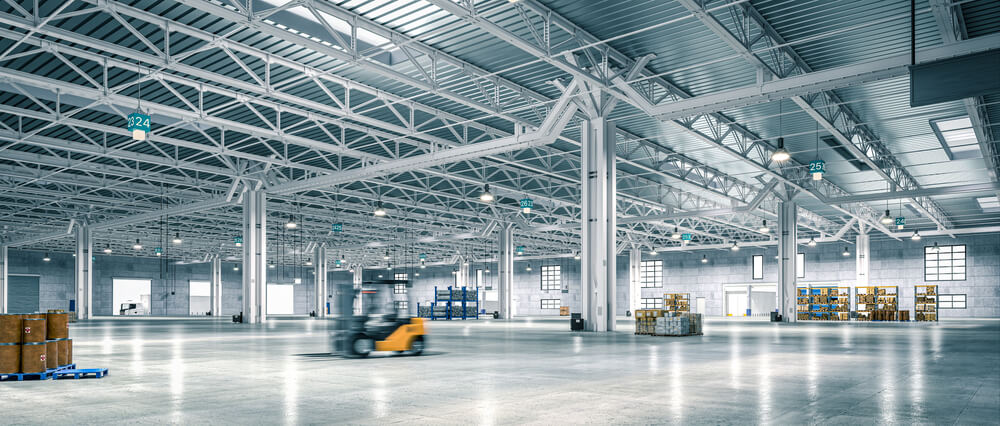
Industrial sheds, once viewed as purely functional structures, are experiencing a transformation in contemporary architecture. These versatile buildings are no longer designed just for warehouses and factories; they now serve as creative spaces, modern offices, residential homes, and sustainable commercial hubs. This evolution demonstrates how industrial sheds can adapt to diverse architectural needs while maintaining their core strengths: durability, affordability, and expansive interiors.
As industries evolve and urban spaces grow more constrained, architects and developers are increasingly turning to industrial sheds as solutions for modern construction. Whether it’s through innovative repurposing or ground-up builds, these structures are being reinvented to meet 21st-century demands.
Why Industrial Sheds Work for Contemporary Design
Industrial sheds are favoured for their unique combination of flexibility and functionality. Their steel frames and modular designs allow architects to think beyond traditional construction constraints. Here are key reasons why industrial sheds are gaining popularity:
- Cost-Effective Solutions: Compared to conventional buildings, industrial sheds offer a more economical construction process. Their prefabricated components significantly reduce building times and labour costs.
- Customisable Spaces: With wide spans and minimal internal supports, industrial sheds provide open-plan interiors that can be customised for various uses, from retail spaces to co-working offices.
- Durability: Built from high-quality steel and robust materials, these sheds are designed to withstand harsh weather conditions and heavy use.
- Sustainability: Many industrial sheds today incorporate eco-friendly materials and energy-efficient features, aligning them with contemporary green-building trends.
It’s no wonder that businesses are increasingly looking at commercial sheds for sale as cost-effective and sustainable alternatives for everything from offices to retail hubs.
Modern Applications of Industrial Sheds
Industrial sheds have evolved from utilitarian spaces into versatile architectural solutions. Let’s explore how they are being adapted to meet contemporary needs:
1. Commercial Spaces
One of the most common modern uses of industrial sheds is in commercial spaces. Retail outlets, showrooms, and office complexes are now being built using industrial shed frameworks. The open-plan nature of these buildings allows for creative interior layouts and unique façade designs that align with a brand’s identity. For instance, car dealerships and furniture showrooms often use sheds to display large inventories without spatial limitations.
For businesses searching for quick expansion opportunities, commercial sheds for sale offer ready-made solutions that can be customised and adapted to specific requirements. These structures allow businesses to avoid lengthy construction times while benefiting from flexible, high-quality spaces.
2. Residential Adaptations
The trend of industrial sheds being transformed into residential homes is growing. Their large interiors provide the perfect canvas for open-plan living, high ceilings, and loft-style spaces. Modern shed homes blend industrial aesthetics, such as exposed steel beams and polished concrete floors, with contemporary comforts like energy-efficient insulation, natural lighting, and stylish finishes.
Architects are leveraging the raw and utilitarian appeal of sheds to design minimalist, modern homes that are both cost-effective and visually striking. These homes are particularly popular in rural or semi-urban settings where land availability allows for expansive layouts.
3. Creative and Cultural Spaces
Industrial sheds have become ideal spaces for art galleries, studios, and creative hubs. Their high ceilings and uninterrupted floor space make them perfect for showcasing large installations, hosting performances, or serving as co-working spaces for artists and designers.
Many cities have repurposed old industrial sheds into cultural landmarks, breathing new life into previously neglected areas. For example, abandoned sheds in urban centres have been transformed into vibrant marketplaces, event spaces, or cultural centres, preserving the area’s industrial history while adding contemporary relevance.
4. Sustainable Architecture
Sustainability is a cornerstone of modern architectural design, and industrial sheds are well-suited to eco-friendly adaptations. By incorporating solar panels, rainwater harvesting systems, and natural ventilation, industrial sheds can become energy-efficient spaces that align with contemporary green-building principles.
The use of prefabricated and recyclable materials reduces construction waste, further contributing to their eco-friendly appeal. Architects are also experimenting with retrofitting existing industrial sheds, minimising the environmental impact of new builds.
5. Agricultural and Industrial Innovations
While their traditional role in agriculture and manufacturing continues, industrial sheds are being adapted with modern innovations. In agriculture, sheds now house hydroponic farms, climate-controlled greenhouses, and processing facilities. In industry, automated machinery and smart technologies are being integrated into shed interiors, creating highly efficient production spaces.
Designing Industrial Sheds for Modern Aesthetics
To meet contemporary architectural standards, industrial sheds are no longer simple steel structures. Modern designs now prioritise aesthetics, functionality, and sustainability. Here are key elements that make today’s industrial sheds stand out:
- Modern Cladding Materials: The use of glass, timber, and architectural panels enhances the external appeal of sheds, giving them a polished and modern look.
- Natural Lighting: Incorporating skylights, large windows, and glass walls allows natural light to flood the interiors, reducing the need for artificial lighting.
- Insulation and Comfort: Modern sheds are equipped with advanced insulation systems, making them suitable for year-round use, whether in a residential, commercial, or industrial setting.
- Smart Design Features: Features like automated doors, ventilation systems, and energy-efficient lighting make sheds functional for a range of contemporary uses.
Architects are increasingly blending industrial aesthetics with modern touches, creating spaces that are visually appealing, highly functional, and adaptable to diverse uses.
Challenges and Opportunities
While industrial sheds offer numerous advantages, their adaptation to contemporary needs is not without challenges. Architects and builders often need to address zoning regulations, insulation requirements, and the need for aesthetic upgrades to align with modern standards. However, these challenges also present opportunities for innovation.
For example, architects are using industrial sheds to experiment with hybrid spaces that combine work, living, and recreation under one roof. By incorporating flexible layouts and modular furniture, these spaces can adapt to the evolving needs of their occupants.
Conclusion
The transformation of industrial sheds into versatile architectural solutions reflects their enduring relevance in a rapidly changing world. From cost-effective commercial spaces to modern homes and creative hubs, these structures are being reimagined to meet contemporary design needs while retaining their inherent strengths.
As businesses and individuals seek innovative and sustainable spaces, the appeal of commercial sheds continues to grow. With their flexibility, durability, and adaptability, industrial sheds have proven that they can evolve alongside modern architecture, offering solutions that are both practical and inspiring.
The future of industrial sheds lies in their ability to adapt to a diverse range of functions while embracing modern aesthetics and sustainable principles. Whether you’re an architect, developer, or business owner, these spaces offer endless possibilities for innovation and creativity.
- 0shares
- Facebook0
- Pinterest0
- Twitter0



